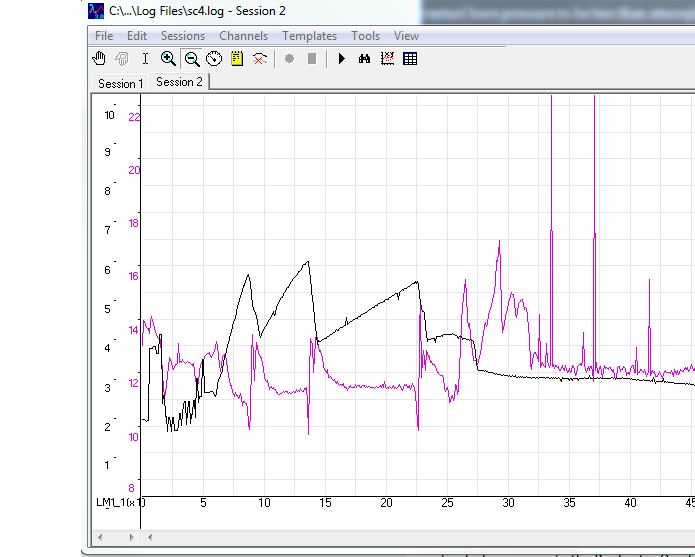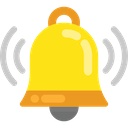I don't see a rpm range, but I do see AFR ratio numbers that are way too high, it's not uncommon to see real high AFR numbers say for example during a shift or a throttle lift on a dyno, but all readings should be taken in 4th gear say on street car from about 3000 rpm to the highest point of rpm that you are willing to take the engine to on a run and during that time you should be at WOT, never ever blip the throttle durng a run once the sequence has started on a chassis dyno. Your AFR numbers are really high, showing you are way too lean on fuel mixture, so you need to richen carbs up and shoot for a AFR of about 12.0-12.5 at WOT in 4th gear, we will play with AFR number as high as 13.0 to 13.5 on the race engines, but I don't recommend that for street driven cars. Here's a run we did on a SCCA limited prep 175 Midget last week, it's a very limited build per the rules, no head porting other than 1" deep gasket matching, .450" max valve lift, stock rocker arms, 11.0 to 1 max CR, on stock HS2 carbs, it made 81 hp at 7700 rpms, and was running 115 mph, thats a little low for what we would like to se, I didn't build this engine, just helped him tune for and at the dyno to make sure we got it as good as we could before he headed to a race this weekend. We will be dyno testing one of my SCCA LP 1275 engines next week, our first time on this chassis dyno with my engines, at the other dyno we had seen as high as 100 hp at rear wheels, but mostly a average from other days at the previous dyno in the mid 90s, making top HP from this engine formula require flowbenching alot of stock heads and finding the very best flowing stock heads, and I flowed a bunch of these heads on my flowbench.
The biggest reason I switched to the new chassis dyno shop is the fact this guy has a really nice AFR hook up that directly interfaces with the dyno software and I trust it's readings, at the old chassis dyno there was times I was sure the AFR numbers were not right, it was cheessy rig at best, so using a shop that has good AFR device that interface with the dyno software is a big deal to me. I also add, don't expect the chassis dyno operator to be a expert at tuning your car, you need to be able do that yourself or carry someone with you that can, all you can really do at the dyno is play with igntion timing and fuel mixture and you should have everything with you to make those changes. Most chassis dyno shop charge anywhere from a $100-150 for a hour of test and tuning and it's well worth it, and if you go with everything you need for changes, you should be able to get it done in a hour or less.
I'll add this too because street guys struggle with this times, you cannot tune a car at partial throttle, you have to tune your AFR at WOT during a run and the rest will take care of itself, so in other words at partial throttle you will show a bit rich, and if you tune for that you will be to lean on the top, and thats not where you want to be, always, always tune AFR numbers at WOT, and don't believe anyone who tells you otherwise , this rule is dyno 101.
Here's the video of our final run the other day, the LED number read out you see in the middle of the screen is the AFR numbers, MPH is at left graph and RPMs are the gauge at the right. You see the car owner is in 4th gear and reglates his rpm to start to run at 4000rpms for this engine and at that time is at WOT until the run edns at 7700 rpms, this is higher than the engine will run on track but we wanted to go higher than expected, what this tell us is where the engine quit making HP, and then we know our true redline, for this engine is was about 7200-7300 rpms before we saw a drop in the HP graph, so thats his redline, no need to go any higher if it's not making HP at those rpm levels.
Hope this helps.
www.youtube.com/watch?v=fvIpLgVNDvo

 Hi Guest!
Hi Guest!
 smilie in place of the real @
smilie in place of the real @
 Pretty Please - add it to our Events forum(s) and add to the calendar! >>
Pretty Please - add it to our Events forum(s) and add to the calendar! >> 
